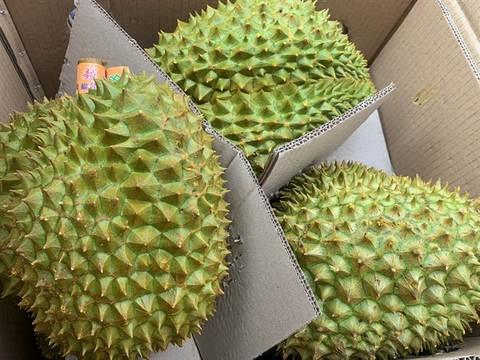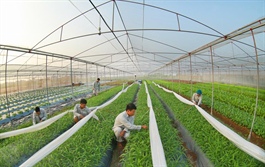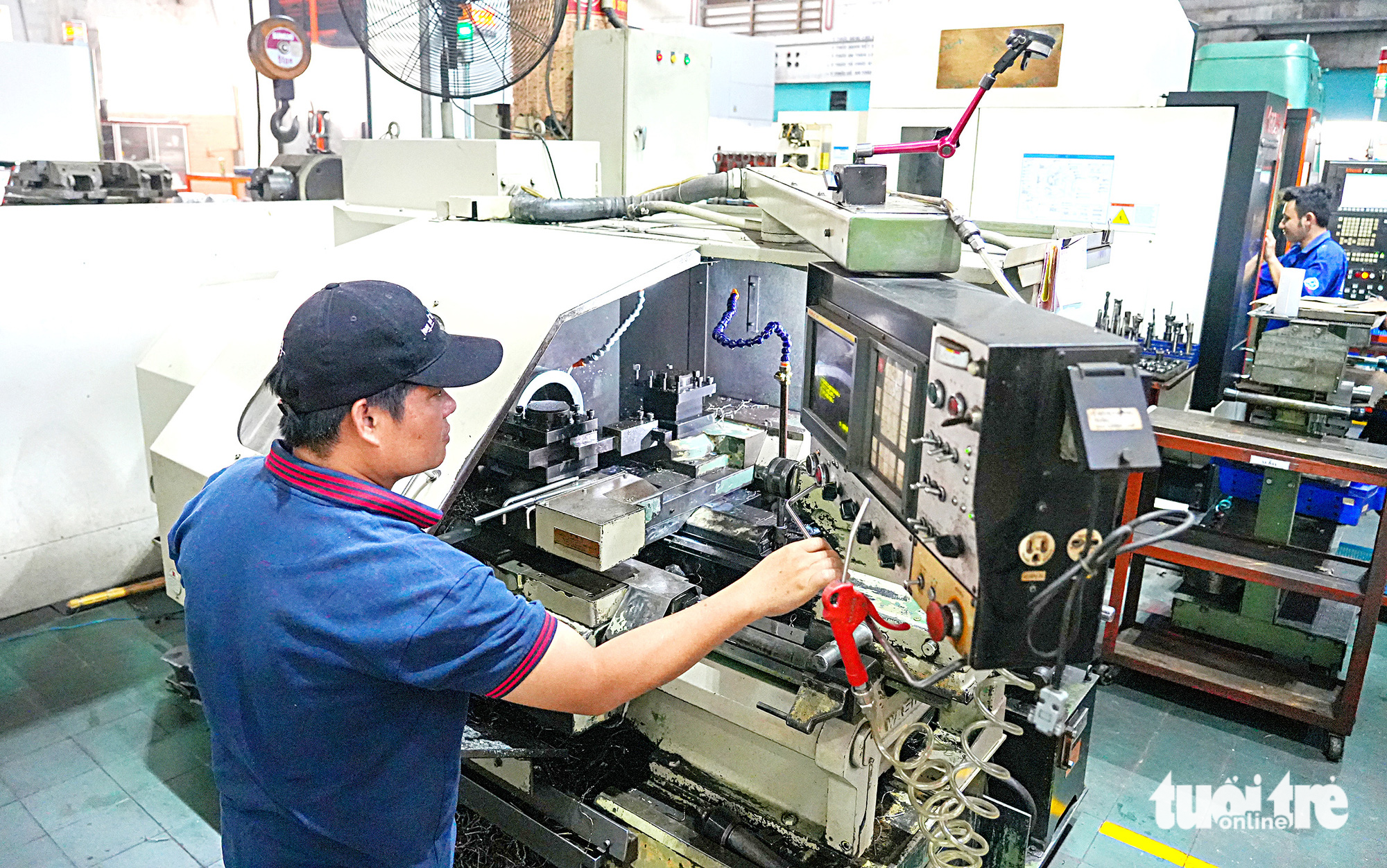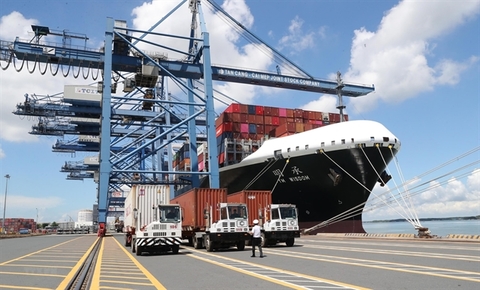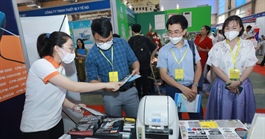Lay-offs and exports dip haunt vital manufacturing
Lay-offs and exports dip haunt vital manufacturing
Foreign-invested enterprises look set to struggle this year, particularly in garments, textiles, and footwear, as exports continue to fall and more workers are laid off.
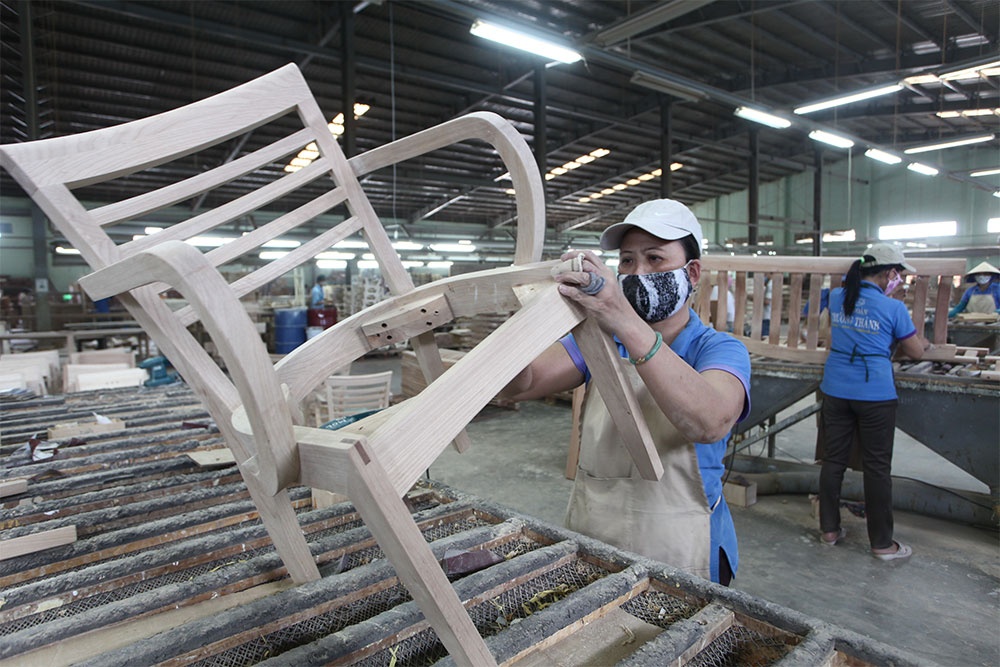
In mid-February, Taiwanese shoemaker PouYuen, based in Ho Chi Minh City, was forced to lay off about 3,000 workers due to a shortage of orders. It is not the first time the company has had to reduce its workforce. At the end of last year, the company gave nearly 20,000 workers a day off every alternate week due to low sales.
The company currently employs over 50,000 workers to manufacture footwear on a contractual basis for major global brands such as Nike, Adidas, and Reebok. At its peak of operations, the total number of its employees reached 100,000.
The decrease in workers has been a blow for the largest footwear manufacturer in Vietnam, which makes annual revenues of around $1 billion.
A report by the Vietnam General Confederation of Labour showed that between September 2022 and January this year, approximately 1,300 enterprises in 50 cities and provinces decreased the working hours of nearly half a million employees. The report said that nearly 90 per cent of these employees either had reduced working hours or their jobs suspended, and a total of 7,000 people were laid off without any compensation.
Three-quarters of those workers came from 1,300 companies and foreign-invested enterprises, focusing on garments and textiles, footwear, and wood processing. The manufacturers are concentrated in the south, mainly Ho Chi Minh City, Long An, Tay Ninh, Dong Nai, Binh Duong, and An Giang.
In January, meanwhile, Vietnam’s export turnover of footwear saw a plunge of 17.7 per cent on-year to $1.6 billion. Exports of bags, suitcases, and umbrellas decreased by 18.3 per cent on-year to $320 million.
Nguyen Duc Thuan, chairman of the Vietnam Leather, Footwear and Handbag Association, said that in 2022, the sector had to overcome many difficulties to increase export turnover. However, this does not guarantee a successful 2023.
“The export target will be a challenge as consumption looks set to decrease across the globe. The number of unsold products of many brands is considerable. Meanwhile, in the domestic market, manufacturers face difficulties in getting loans, together with soaring production costs. This means that manufacturers have to operate in an uncertain market,” Thuan said.
The garment and textile industry is in a similar situation. Many enterprises have to operate under capacity and their only expectation is to maintain jobs for their employees.
According to the latest report from the Ministry of Finance, PouYuen paid $4.3 million into the state budget in taxes in 2020, but the figure plummeted by 70 per cent to $1.26 million in 2021. The company saw an average annual revenue of $1.19 billion during 2016-2019, but this dropped to $1.08 billion and $865.2 million in 2020 and 2021, respectively.
In terms of garments and textiles, the export turnover in the sector in January was $2.25 billion, down 22.4 per cent compared to the previous month and down 37 per cent on-year.
The textile and garment industry, as well as others, are continuing to face challenges such as the pandemic aftermath, global inflation, lowered consumer purchasing power, and conflict in Ukraine. Additionally, strict requirements from brands such as production discounts, small orders, and fast delivery times are further complicating their operations. In its recent textile and garment industry outlook report, the Centre for Analysis and Investment Advisory of SSI Securities believes that inflationary pressure will continue to challenge the market in 2023.
KIS Securities also predicts that 2023 would be a challenging year for the textile industry due to the low demand for apparel products.
According to the Vietnam Textile and Apparel Association, pre-orders for the first quarter of 2023 fell by 25-27 per cent on-year.
Although there are no details on the impact on revenues thus far, foreign-invested enterprises account for an average of 60 per cent of the industry’s exports.




